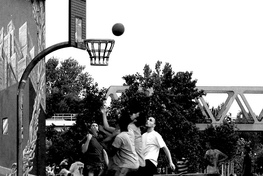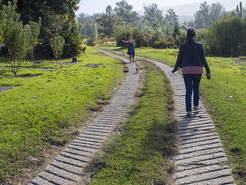 Today's exploration of near enemies is a tough one for most people. We may acknowledge that mentor and parent are two distinctly different things but many mentors' behavior tells a different tale. The difficulty lies in the hierarchical nature of the relationship. A mentor is there to guide and to teach the apprentice the skills they need to learn to succeed. A parent also does these things but the parent role comes from a much different place and has a much greater responsibility.  One of the most common ways to bring meditation into the body is through walking meditation. Many traditions use this practice and engage it in slightly different ways. You will often find Zen monks walking in slowly moving circles or Burmese monks doing some internal labeling of the movements themselves. Walking meditation is a chance to increase awareness within the body and also to break up extended periods of sitting with some much needed movement. Similar to how you learned Working with the Body last week, this week will be about incorporating movement into your regular practice.  This week's look at flaws in thinking is about the Bandwagon Effect. This is a form of group-think where we do or believe things simply because the majority of people around us do or believe those things. There is no critical thinking or assessment involved and when asked, "Why do you believe that? Why do you do that?" there isn't really a response to be given.  “Nope, not quite. Stay standing,” was my response to the student who answered my call-out question but just didn’t get out the more complete answer I needed. I went to the next student, “Melissa, what is your answer to that question?” Melissa answered correctly. I told her, “Excellent, you can sit down.” I then went back to the student who didn’t answer correctly, “Okay, you heard what Melissa just said. Try your answer again.” This time he got the answer right and I told him he could also sit down.
Title: Embracing Vulnerability
Featured: Brené Brown Publication Date: 2013 Summary: Brené Brown says it best when she says, "There can be no empathy without vulnerability." This video discusses what it means to be open and to love in a way that builds people up instead of tears people down. What does it mean to share from a place of authenticity that connects you to others rather than shoves them away?  "This is really hard. I'm not sure I can do it," says your friend or student as they begin freaking out about an upcoming event, test, or stressful life experience. You believe in this person's abilities and reply back, "It will be okay. I'm sure you will do fine." You then watch as the person fails miserably. What the heck happened? You have faith in this person. Is it possible your well meaning encouragement actually may have hindered your friend or student's success rather than contributed to it? This week we learn about Defensive Pessimism.  The next step or layer to add on top of Using Your Breath as Home from last week is to begin to work with the sensations in your body. You may spend so much time up in your head or focused on TV, computer, or phone screens that there may be days when you forget you even have a body. It's in your body, though, where a lot of wisdom lies. It's in your body that you can identify your stress level. It's in your body where you can first identify that you've been triggered before your mental response kicks in. Often, it's your body that is grounding you to the present moment. Emotions are felt in different parts of your body. This is why, after the breath, we move to the body to build a greater connection with ourselves and the present moment.  Backfire Effect (n.) - In our current culture, you may have many moments where someone presents you with facts, figures, and research evidence to show you that a deeply held personal belief or opinion doesn't match up with the facts When you look at this new information and are not only not swayed to change your mind but, rather, you dig your heels in even more to maintain your belief, you are exhibiting the Backfire Effect.  Frequently when a student isn't learning, people will say, "Well, teach them a different way." That is all well and good but what does that mean? What if I don't have a different way? The learning modalities are standard fare in class design and using a mix of all three of these ways of learning ensures you are engaging all the students in your classroom. Let's examine each of the three modalities:  Monkey Mind (n.) - As you begin to do a meditation practice, you will notice that your mind has the tendency to just chatter away. You may be constantly planning, ruminating, justifying, thinking about last week's TV show, and on and on. This inner dialogue does not often stop. It leaps from topic to topic like a monkey from branch to branch in a tree. The name we give to this often mindless mental chatter is called "Monkey Mind." |
My Writing and Other Resources for StudentsA growing collection of writing and other resources for students to use to continue their growth.
|

 RSS Feed
RSS Feed